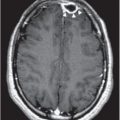Figure 174.1 Mucormycosis: Hyphae (arrow) vary from 6 to 50 μm in diameter, are nonseptated, and typically branch at 90° angles. (Courtesy of www.doctorfungus.org © 2007.)
The diagnosis of pulmonary mucormycosis is also highly dependent on clinical awareness in high-risk clinical settings, with leukemia and bone marrow transplantation most important predispositions, followed by organ transplantation. Prior use of itraconazole or voriconazole for prophylaxis or empiric antifungal therapy may also be a risk factor. The disease resembles invasive aspergillosis in similar hosts and can be distinguished only by histopathology or by culture.
Treatment
Rhinocerebral mucormycosis has a very high mortality, beyond 50% of cases in many series. Successful therapy is most likely if the diagnosis is made early and initiation of therapy is based entirely on clinical findings, before confirmation by histopathology or culture. There are three aspects to the treatment. First, the diabetic ketoacidosis must be controlled. Second, and most importantly, aggressive surgical debridement of all necrotic tissue must be done. Sometimes several procedures are needed as the limits of the diseased tissue become more apparent. Finally, full doses of amphotericin B (AMB) must be given quickly. Use of lipid-based formulations of AMB (AMB-L) have become standard because of lower toxicity and likely superior efficacy. Usual dose of AMB-L is 5 mg/kg/day – higher dosing to 7.5 or 10 (or even higher) mg/kg/day has been used in select cases, but has higher toxicity.
Pulmonary mucormycosis is also highly lethal. Once there is spread to distant sites and particularly to the brain, fatal outcome is nearly certain. Localized pulmonary disease can sometimes be managed successfully. Again, a three-pronged approach is necessary. First, the predisposing causes must be reversed. This means return of neutrophils (either spontaneously or aided by marrow-stimulating biologicals) and/or rapid taper of glucocorticoid therapy to the extent it is possible. Second, AMB-L should be started and escalated quickly to full dosages. Third, if the patient stabilizes, strong consideration should be given to surgical resection of necrotic lung tissue, if the lung disease is localized and the risk of thoracotomy is reasonably low. There are anecdotal reports of successful treatment of pulmonary mucormycosis by surgical resection alone. In those rare cases, the preoperative diagnosis was uncertain, total excision of all involved lung was accomplished, the diagnosis was established by histopathology of the resected tissue, and the patient recovered fully without other therapy.
When possible, isolated renal mucormycosis in patients with AIDS should be treated with nephrectomy combined with AMB-L. When nephrectomy is either not possible or is not a reasonable option given the overall condition of the patient, AMB-L alone should be used. There are some anecdotal successes using AMB-L without surgery.
Cutaneous mucormycosis is treated with aggressive surgical debridement and aggressive antifungal therapy, with AMB-L the first-line therapy.
Stay updated, free articles. Join our Telegram channel

Full access? Get Clinical Tree





